One of the biggest battles in the eCommerce world is Shopify vs Amazon. They are the big names who offer online business owners different selling features and advantages. Even then, knowing the criteria to use can help you make the best choice.
With the rapid growth of the e-commerce industry, newcomers have a hard time choosing from a wide range of sites to setup their online business.
Since products worth billions of dollars are sold each year, most entrepreneurs often target selling online. That’s why merchants are continually looking for the best platform which can help them boost their sales and in turn profits.
In addition to the convenience that selling online offers, it’s no wonder that many people are today choosing to shop online over visiting stores. There’s nothing better than shopping for stuff and not have to leave your home.
As such, it’s easy to make decisions provided you have all the facts. Therefore, I’ve looked at details that can help you pick the right platform for your business.
Shopify vs Amazon: An Overview and Benefits
What is Shopify?
This is an eCommerce platform that allows you to set up an online store as well as manage all its e-commerce functions. That includes payment acceptance, inventory, and shipping in the same place.
Since it’s a hosted platform, it means that Shopify is cloud-based. Thus, you don’t need to buy software or pay to improve it. Plus your Shopify membership helps ensure that you can access the latest updates.
What are the Benefits of Shopify?
This platform comes with a friendly administrator interface and an easy setup which is why it’s among the most popular e-commerce platforms today. It also offers a few professionally designed templates free of charge.
Although Shopify’s administrative options are listed in English, you can still use any language to create your storefront. Plus the platform allows you to pick the payment gateway you can use. It can even accept funds in several currencies.
Through Shopify’s E-Commerce University, you can access how-to guides, numerous articles, and other training resources. The best part is that Shopify has an in-house support team that can be reached at any time.
When running an eCommerce business, the most important thing you can do is to keep your customers happy. This platform provides your customers with the best tools so that they can purchase from your store.
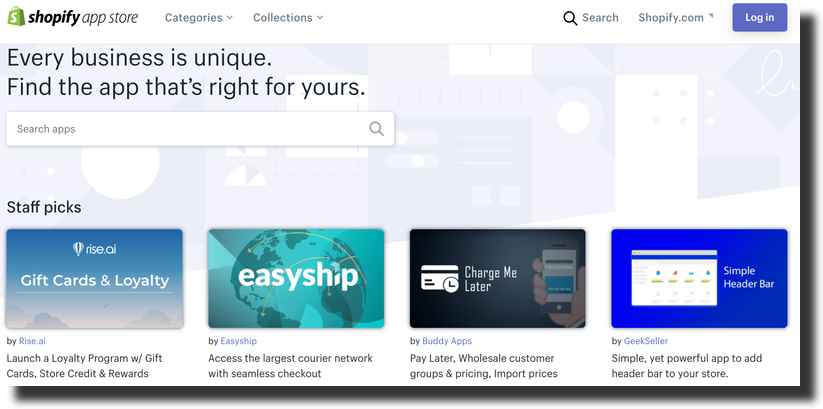
Some features included are the ability to display other customer reviews and customers can zoom in to have a closer look at images of your products. Also, you can opt to use third-party fulfillment services (these are drop shippers). However, you can choose to fulfill all your own orders.
Shopify Updates: June 2020
Recently Shopify announced several exciting updates. Below are five highlights you may want to know about:
- Shop App. It’s a new shopping app that lets customers visit their preferred Shopify stores, track orders, and get product recommendations. It already has over 16 million users!
- Local Delivery and Curbside Pickup. Sellers are now able to offer contact-free and more flexible shipping options.
- New tipping feature. Sellers can allow tipping during checkout, and also customize the text to request for donations to a favorite charity or their business.
- New “Express” theme – It allows non-traditional businesses such as restaurants to easily and quickly build an online store.
- Shopify Balance (to be released later this year). A new account intended for small businesses that let you track expenses, pay bills and even request for funding via your Shopify admin. It also comes with a Shopify card that offers a rewards program customized to suit merchants’ needs.
What is Amazon?
While Amazon.com is a huge e-commerce platform, but do you know that over half of the items sold here are put on the market by third-party sellers? Selling on Amazon is open to individuals or professionals, and this platform provides numerous options for shipping.
What are some benefits of Amazon?
The main benefit of selling on Amazon it’s easy for buyers to find you. From 2018, 54% of people were doing direct product searches from Amazon compared to 46% search traffic that started from Google.
Also, when it comes to some products, if you are not selling on Amazon, you won’t be found by over half of prospective customers.
So, what are other benefits you can enjoy when selling on Amazon?
- Automatic Trust: Thanks to the level of trust people have with this platform, thus they won’t be worried about whether you’re trustworthy and secure for shipments or payments. Amazon provides a lot of security to protect shoppers, so buyers are likely to try your products.
- Repeat business and Traffic with little effort going to marketing. Amazon has the brand power, and this can help boost your products once they’re listed on this site. However, this doesn’t mean you don’t have to do much, plus you won’t need to apply the SEO work for your site to rank.
- Access to Amazon’s Resources: This includes resources like fulfillment and shipping options, Amazon customer service, shipping discounts, and a third-party seller community.
Shopify vs Amazon: The Major Difference between Shopify and Amazon
Keep in mind that Shopify is more a specialized eCommerce platform while Amazon works as an online marketplace. With Shopify, you have the needed tools to create your online store while with Amazon you get to sell alongside other sellers through its existing marketplace.
This makes selling through Amazon more like getting a stall in a popular boot-fair with thousands of people browsing through to buy. Although most visitors aren’t particularly searching for your business, you’ll still make lots of sales since everyone browsing by and sees your stall.
On the other hand, Shopify can be compared to renting a building where you establish your business in. This comes with your own space which means customers will come searching for your online store after they’re are familiar with your brand. Shopify has more room you can use to create your unique image, however, it requires hard work building up your regular customer base.
Due to the differences above, Shopify and Amazon will cater to different kinds of online sellers. By this I mean, Amazon caters to medium and small businesses up to individual sellers. Shopify works well for all starting from small businesses to much larger brands.
Next, let’s explore the differences in more detail to help you better choose the one that can best suit your specific business model.
Amazon vs Shopify: Pricing
Pricing in Shopify
Shopify comes with three plans and this will increase the features and capabilities and monthly fees. Besides, you’ll enjoy discounts on Shopify Shipping and Shopify Payments.
There are however some features that all these services share, which include a limitless customizable online store, 24/7 customer support, unlimited products, the option to sell through social media channels and third-party online marketplaces, discount codes, manual order creation, abandoned cart recovery, and free SSL certificate.
Also, all plans let you access Shopify Payments, Shopify Point of Sale, and Shopify Shipping but with varying capabilities and discounts.
- Basic Shopify: Charges a $29 monthly fee.
- Shopify: Costs $79 each month.
- Advanced Shopify: Goes for $299 a month.
Also, enterprises and businesses that handle large order volumes have the choice to use Shopify Plus that charges customized pricing. As for the smallest businesses that sell on Shopify, such as side hustlers and hobbyists, there is the Shopify Lite.
With a cost of $9 a month, the Shopify Lite plan allows selling in person, on social media using the platform’s point of sale app. Also, you can use your existing blog or website by embedding the Shopify Buy Button.
Amazon Pricing
For you to sell on Amazon, you first need to choose between two of Amazon’s service plans which are the Individual or Professional plans.
As for the Individual plan, it’s perfect for those with small businesses that are planning to sell less than 40 items a month.
The good thing about this plan is that it doesn’t come with a monthly subscription fee, but you have to pay $0.99 for each sold item. In addition, there are additional selling fees, such as shipping fees and variable closing fees.
Its Professional plan goes for $39.99 every month. Also, with this plan, you won’t have to pay the per-item selling fees, but you’ll have to pay for a referral fee which varies depending on the item’s category, shipping fees, and variable closing fees.
The charges on Amazon’s referral fees will vary depending on the category of a product. For instance, books have a 15% charge of the sale price. Also, consumer electronics have an 8% or 30 cents charge minimum.
When looking at Amazon FBA vs Shopify, the thing with Amazon is that you can pay to have Amazon fulfill the items. This means that your inventory is kept in an Amazon warehouse plus Amazon will handle the shipping. However, you’ll need to pay a per-unit shipping fee for every order and a warehousing fee that is charged per cubic foot of the stored product.
In addition to a monthly subscription (for those using the Professional plan) and your selling fees, you’ll have to pay fees for Fulfillment by Amazon (FBA) if you decide to use the service for inventory storage or order fulfillment. Since Amazon’s fees can be somewhat confusing to calculate and track, consider taking a look at Amazon’s Fee Schedule to have a detailed breakdown.
Shopify vs Amazon: Payment Options and Fees
Amazon Fees and Payment Options
In some instances, you need to look beyond the upfront costs. There are things like credit card rates and transaction fees that can raise your monthly outgoings. Therefore, it’s a good idea that you check such details before you commit.
It comes as no surprise why Amazon uses Amazon Pay as the main payment gateway. This lets you accept debit and credit cards, but doesn’t work with PayPal.
For ‘Professional Sellers’, this marketplace attracts selling fees in addition to the monthly subscription. However, these fees will vary depending on the category but they include shipping fees and referral fees.
When using FBA it’s important to note that some fees are ranging from $2.41 to $137.32 per unit fulfillment fees.
Also, Amazon has inventory storage fees charged every month and will range between $0.69 and $2.40 per cubic foot. However, as mentioned earlier, these prices are subject to the volume, type of product, and size. Also, the time of year can affect the amount.
As an individual seller, you won’t have to pay a monthly subscription as is the case with Professional Sellers. Instead, you’ll be paying a $0.99 fee per product sold.
Shopify Payment Options and Fees
When comparing selling on Shopify vs Amazon, Shopify has its payment gateway, the Shopify Payments. So, as you use it you won’t be expected to pay transaction fees at all.
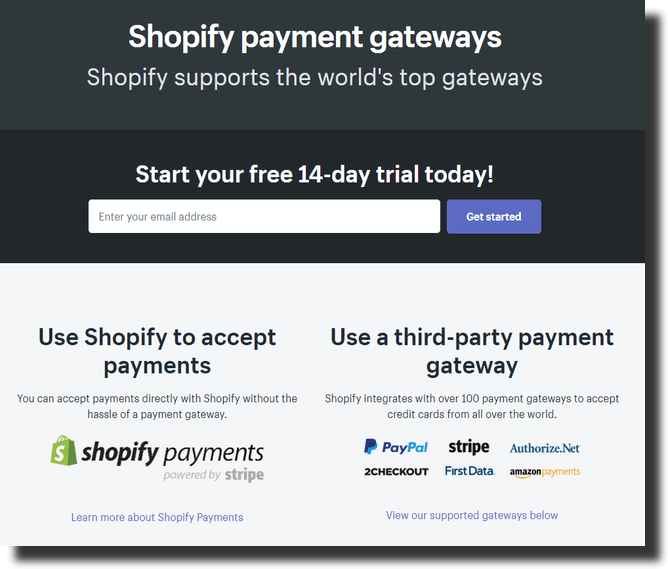
What’s more, Shopify offers you a variety of over 100 payment gateways which include PayPal and Amazon Pay. All these have transaction fees that range from 0.5% to about 2% depending on the one you choose to use and the plan you’re on.
Note that credit card fees will apply to each payment gateway and this includes Shopify Payments. Shopify’s regular credit card rate is 2.9% plus 30¢. By upgrading following Shopify’s price plans then you’ll enjoy a decrease to your online credit card charges from 2.9 percent + 30¢ to 2.4 percent + 30¢.
Shopify vs Amazon: Ownership
Next, I’ll be talking about the ownership of your customers and your online store. With Amazon, you don’t have complete control over your online business.
Since Amazon controls their site, it means they also control all customers, so you’ll have to follow their rules. If you don’t, you’ll risk losing your selling privileges and even losing access to customers on Amazon.
In comparing selling on Shopify vs Amazon, although your responsibilities are more on Shopify, store owners have complete ownership over everything. This is because you are not renting a spot like is the case with a marketplace, like Amazon.
Shopify vs Amazon: Ease of Use
Shopify Easy To Use
Whether you want to sell pairs of socks or build an eCommerce empire, your online selling experience must flow without a glitch.
If the idea of creating your online store is a little overwhelming for you, with Shopify the process is much easier. This platform is designed to simplify the process of building a business website. It comes with a clean and clear design with numerous help pages and easy-to-use navigation.
Shopify’s dashboard prompts users to get started. It also offers an easy quick view of the total sales, sales breakdown, and top products.
This platform does a great job of making effective sales tools available to all sellers. Thus Shopify’s inclusive approach helps support eCommerce.
Amazon Ease of Use
Is Shopify better than Amazon? To answer this, let’s look at Amazon’s ease of use. With Amazon, all you have to do is complete every set-up stage of your account and you’re ready to sell.
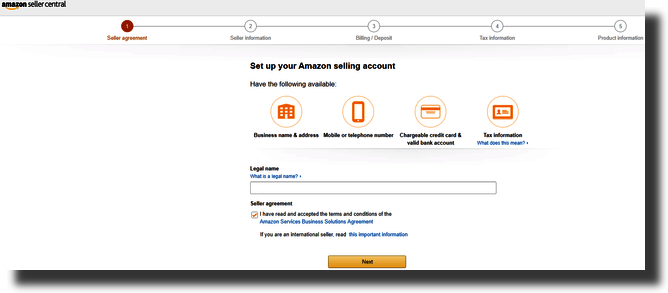
This marketplace uses an easy-to-follow store setup that goes through a step by the step registration process. Once you’ve registered, you can start listing your products, and after making sales, you then ship them and thereafter get paid.
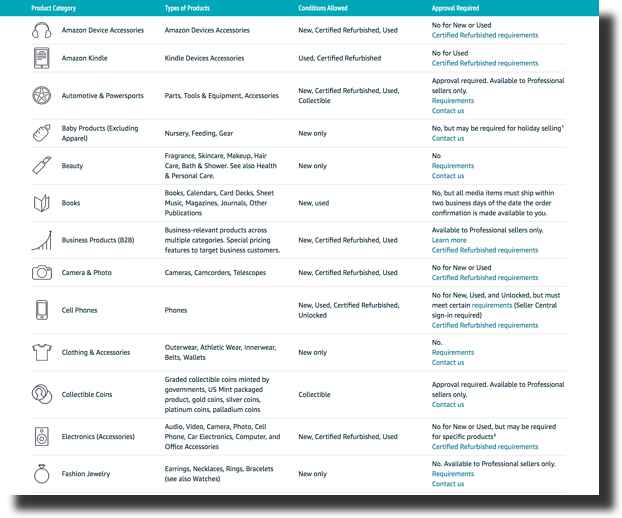
Amazon provides tools to simplify the whole setup process. For instance, you can take care of shipping yourself or choose to take advantage of FBA (Fulfilment by Amazon).
FBA takes shipping out of your hands, thus you don’t need to worry about it. Rather, you’ll sell your products then Amazon handles the rest for you.
While both Amazon FBA vs Shopify doesn’t work the same way, they are designed to simplify running your online business. Also, they offer useful tools and even streamlined setups.
Shopify vs Amazon: Built-In Fulfilment and Shipping Channels
Besides bringing in customers, shipping products can make a huge difference. One great feature you’ll have access to when selling on Amazon is their fulfilled by Amazon or FBA. FBA caters to everything around order fulfillment and includes storage, packaging of your products plus shipping. It can also fulfill orders on several channels.
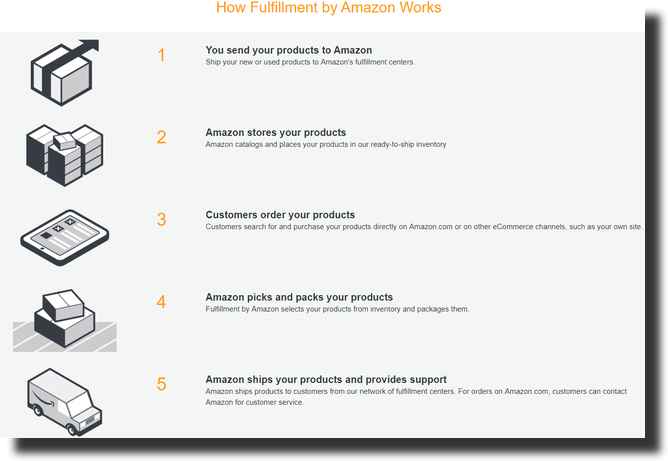
Order fulfillment is a big part of any eCommerce business. As such it can damage your brand reputation in a huge way when it’s not efficient.
When it concerns Shopify vs Amazon FBA, Shopify is also working on building its fulfillment network to compete with FBA. However, this might take a while before they establish a shipping network of the same standard as Amazon. Amazon’s FBA is reliable, trusted, and offers free two-day shipping to nearly all US customers, and that can be tough to beat.
Shopify vs Amazon: Design Flexibility
Shopify Design
Having a bad design for your online store can be frustrating and will not offer your customers a smooth experience when browsing your store. Luckily when using Shopify or Amazon this won’t be an issue for you.
Shopify gives you complete control over the design and layout of your online business. But you won’t have to start designing it from scratch – rather you can choose a theme from their 60 plus themes. You can then customize it to align with your brand.

Shopify provides you with a mix of modern and professional paid and free themes that you can customize for your store.
You have to 10 free themes plus more than 60 premium themes that cost between $140 and $180. These allow you to personalize, edit, and also change your theme, thus creating an exceptional brand image for your online business.
Amazon design
Amazon’s design is more limiting and all its pages are set up in a similar layout. While it allows you to upload your product images and descriptions, its overall design and layout for your store page are recognized as Amazon’s so it’s not unique for your brand.
Also, products will be promoted on Amazon’s homepage without branding. Although this is beneficial for marketing your products, it becomes harder for your brand to be noticeable from the crowd.
On Amazon’s homepage, for instance, products will be listed using Amazon’s branding, next to your competitors’ products. While this is great for customers, it can, however, make it harder to direct visitors to your pages.
Although there are elements to customize with Amazon, overall it’s less flexible compared to Shopify.
Shopify vs Amazon: Help and Support
Amazon Support Centre
Amazon’s support system isn’t the clearest – they offer phone support where a seller requests a call then Amazon contacts them.
Also, there are forms you can be submitted for community and support forums where you can discuss issues. But, this isn’t the easiest to use or the most streamlined support system.
Shopify Support Centre
Shopify’s comprehensive help options include:
- Social media.
- 24/7 phone.
- Forum.
- Video tutorials.
- 24/7 live chat.
- Email.
- Advanced specialist support.
The different help sets will cover you regardless of what you need. Forums and Video tutorials will teach you new skills, while phone support offers you the right help whenever you need it.
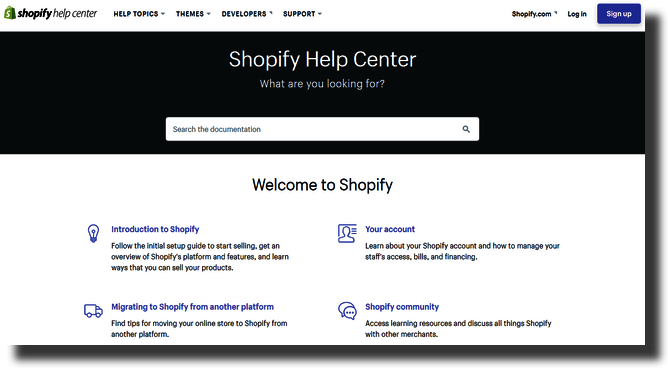
Also, Shopify’s Help Center has articles and guides plus it’s easy to navigate and offers numerous resources you can browse.
Shopify vs Amazon: Attracting Customers
Amazon Reaching Customers
One of the best ways you can connect with shoppers is by selling online. But catching your customers’ attention comes with some challenges. Since competitors use ads to target your customers on their social feeds with distractions at each click this is why this is a race to get in front of shoppers.
That’s where Amazon shines and with millions of visitors each month, your chances of succeeding here are in your favor. Plus you won’t have to deal with running email campaigns or SEO (search engine optimization) – people visit Amazon searching for what they want and are ready to buy.
Amazon receives more than 150 million visitors each month from the US alone. With this amount of traffic, it is a great opportunity that will ensure your products are found.
This gives you enough time to deal with orders and manage your inventory – rather than you reaching out to your customers, they come to you.
While you don’t have to be concerned about Google’s SEO, you’ll need to fulfill Amazon’s SEO to help you rank higher up in this marketplace search results. This helps increase your chances of shoppers choosing your products over your competitors.
Shopify Reaching Customers
When looking at Amazon vs Shopify customer reach, Shopify has a different search volume compared to Amazon. This is because you have to create your brand. That means people have to search for your brand to find you. What this also means is that marketing is crucial to expanding your customer base.
Multichannel selling, email campaigns, abandoned cart recovery, personalized shopping, strong social media presence, and the well-known SEO – all these play a huge part in expanding your brand reach and growing your customer base.
When using Shopify, you’ll have to work harder for you to reach more customers. The thing is, Shopify stores don’t receive the same amount of search volume as Amazon since this is its website. Therefore, your marketing efforts need to be top-notch. Also, you should leverage the power of email marketing, social media, and other strategies to help you stand out.
Fortunately, Shopify will support you throughout the process of setting up. It automatically offers you a wide range of marketing tools. Plus you can find more tools on Shopify App Market.
Shopify vs Amazon: eCommerce Tools and Features
Amazon Features And eCommerce Tools
It’s important that you create your store to include eCommerce power tools and also have a stunning design.
As such Amazon’s market supports the selling of a huge range of products ranging from books, electronics, and toys. You can also sell services here instead of physical goods.
Amazon is perfect for individual sellers and even businesses plus it offers tools that support online selling. Some of these tools include unique stores like Amazon’s global selling, Handmade, global, and the capability to create targeted adverts.
Another example is Amazon’s FBA (Fulfilment by Amazon) program that gives you access to Amazon Prime customers. This program also lets Amazon manage storage, packing, and even the shipping of ordered products.
To start with, you’ll need to send the products to Amazon, which then package and ship them to customers based on orders made. This program attracts some fees, so if you prefer not to deal with shipping this solution is useful for you.
Shopify Features and eCommerce Tools
Shopify offers the most in-depth and widest variety of sales tools ever. It’s a huge choice of features and sales tools that help you expand your business easily and fast.
Below are several eCommerce tools that Shopify provides:
- Logo maker.
- Abandoned cart recovery.
- App integration.
- Powerful inventory system.
- Multichannel selling.
- Automatic tax calculation.
Shopify has all the useful tools you need to help your online business succeed while simplifying your life as an online business owner. What’s more, this platform recently came together with Oberlo to offer drop shipping services.
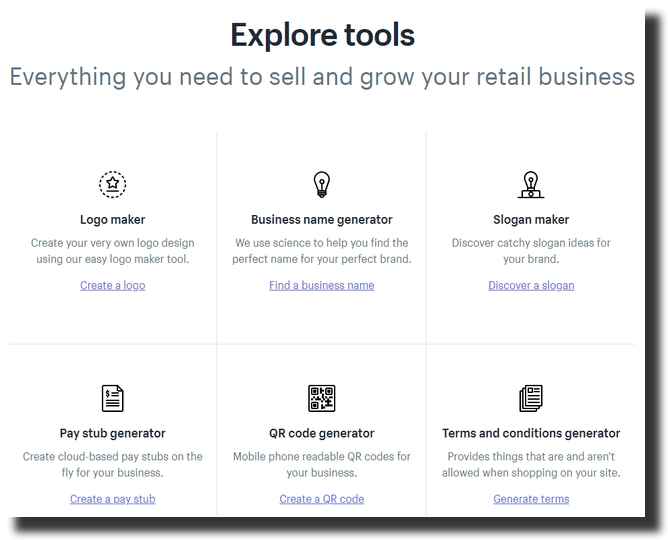
If you want to include more features on your Shopify dashboard, Shopify comes with a huge app store that you can utilize to advance and grow your eCommerce website.
Next, I’ll be looking at the pros and cons of Amazon and Shopify.
Shopify vs Amazon: Pros & Cons
Shopify Pros
Unique brand identity: Since you’ll be creating your eCommerce website, you’ll also be building a unique yet powerful brand for your business.
Powerful eCommerce tools: It offers a wide variety of eCommerce tools that are designed to support you as you build and market your online store.
Shopify Cons
Added costs: Although Shopify has an App store, you’ll have to pay a monthly fee. Including third-party apps in your store will add to your monthly costs.
Marketing: The responsibility of building brand awareness and promoting your business falls on you.
Amazon Pros
Traffic: Today, Millions of people shop from the Amazon marketplace each month, your products will have great exposure.
Extra services: This marketplace can manage your inventory storage, order packaging, and even shipping for you. This aspect frees up your time so you can focus on running your business.
Amazon Cons
Competition: Because Amazon has a huge range of products, you’ll have lots of competition. In some instances, you’ll be competing directly against Amazon itself.
Branding: You’ll have a tough time building a unique brand image when selling on Amazon.
Amazon And Shopify: Which One To Choose?
When you’re looking at Amazon vs Shopify, you are likely to come across many important features that both platforms offer online stores.
As concerns Shopify, this is a great option for beginners in online selling plus the platform is easy to use. Shopify provides several premade page design templates and doesn’t require that you know to program.
To set up, you may not necessarily need to work with a web designer or a programmer to create your store. Also, you can use any of its free or paid apps to enhance your page. However, a comparison between Amazon and Shopify shows that Shopify is pricier than Amazon.
Again, Amazon was among the first platforms for online selling and it’s more developed. Even then, each platform comes with its advantages, however, when deciding on the one to use, it’s important that you consider your business needs and the opportunities that each offers.
Using Amazon with Shopify
Both Amazon and Shopify are well-matched and both offer specific features that the other does not. This means when used together, you stand to reap the benefits that each of their different features can offer.
Therefore, it’s possible to integrate Amazon into your Shopify online store. This means you get to build your eCommerce business and then promote your products on Amazon, the largest marketplace in the world with a few clicks.
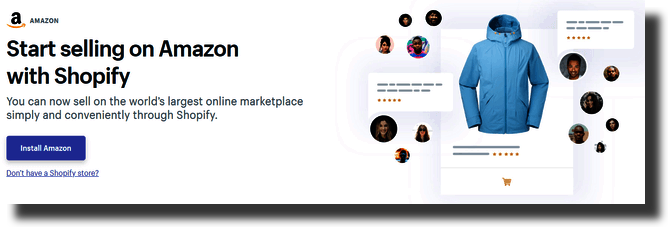
To help maximize your exposure, increase sales, and grow your customer base, you can use Amazon alongside your Shopify store. This lets you set up Amazon offers and listings straight from Shopify, as well as sync product details, inventory and link products, and even do more.
All you need to do is start by creating an Amazon Seller account then include Amazon’s Sales Channel to your existing Shopify Store.
The one thing you should keep in mind is you’ll still be required to pay to use Amazon’s Professional Seller account. Since you already are paying Shopify’s monthly subscription, you will in addition need to pay for Amazon’s Professional plan to enjoy their benefits.
So, if your online store is ready to get more exposure and growth, combining both Shopify and Amazon is worth every penny you invest.
Shopify vs. Amazon: Which is Right for Your Business?
As we have seen, both Amazon and Shopify have some obvious advantages and disadvantages.
If you opt to sell on Amazon, then you’ll be able to leverage its huge, existing audience and you won’t have to engage in any small business marketing by yourself. Again, Amazon can manage lots of back-end heavy lifting, such as storing your inventory, fulfilling, and even shipping orders.
As such, setting up your Amazon page is easy and thanks to Amazon’s massive traffic, you’ll start making sales fast. On the flip side, it can be challenging to track Amazon’s fees, plus they could increase fast.
Another thing to note is that you’ll have to follow Amazon’s selling policies that also include their restrictions when selling some items.
As for Shopify, you have complete control over your online store which includes its layout, branding, and customer experience. Shopify’s fees are transparent, and setting up and customizing your online store is easy and intuitive.
In addition, you’ll need to drive and build traffic through actively doing all the marketing for your store, though you don’t have to lower your prices than you’re comfortable for you to compete with the saturated ecosystem on the Amazon marketplace.
The summary table that highlights the difference between Shopify and Amazon
| Category | Shopify | Amazon |
| Pricing | Shopify offers three price plans costing from $29 to $299 a month. It has a 14-day free trial. | Amazon offers two plans: one prized at $0.99 per item, and the other goes for $39.99 per month. They’re both subject to additional variable fees. |
| Payment Options & Fees | Transparent pricing: zero transaction fees if using Shopify’s Payment gateway, other charges or costs are clearly listed. The platform offers over 100 payment options. | Supports Amazon’s Pay payment gateway that accepts debit and credit cards. Additional fees are also included but will vary to be transparent. |
| Ownership | Sellers have full control over their stores thus can change store design and customize the brand image to that of their business. | Sellers don’t have complete control over their business. Plus sellers must comply with Amazon’s rules. |
| Ease of Use | Shopify is accessible and easy to use when creating an online store. | You only need to get an Amazon seller account for you to sell your products on this marketplace. |
| Built-in fulfillment and shipping channels | All order fulfillment is handled by sellers since Shopify doesn’t have an established fulfillment network. | Amazon offers the Fulfilment by Amazon a service that handles inventory storage, packaging, and order shipping. |
| Design Flexibility | Shopify offers a professional range of customizable templates. It’s easy to build your unique brand. | Amazon controls your store’s page design and product displays. Although it’s easy, it can restrict your business identity. |
| Help & Support | Shopify has a well-established help and support system. From live chat to 24/7 phone support to their help center plus guides and forums to discuss issues you have. | Amazon support option includes a help forum, though not as accessible as Shopify’s. |
| Attracting Customers | You have to do all the marketing and SEO yourself. The platform offers you the tools you need to succeed, however, you’re responsible for driving your traffic. | Amazon attracts millions of visitors each month, so traffic is brought to your store. However, you face the challenge of steep competition from other sellers as well as Amazon itself for you to increase ranking in Amazon’s searches. |
| Ecommerce Tools & Features | Shopify provided the best sales tools and features ever. It offers numerous in-built tools and also has an app store. | Amazon provides a wide variety of features that work for different sellers’ business needs. |
Results
Ultimately, you might decide to use both Amazon and Shopify as a way of optimizing and diversifying your selling potential. As we have seen above, you can leverage each of their different aspects to help you sell your products, grow your customer base, and for all order fulfillment to your customers.
Although you are required to a monthly subscription for both channels, you will be getting access to all the tools and resources that each has to offer.
Even then, remember that Amazon and Shopify aren’t the same!
By using both Shopify and Amazon, you will be off to a great start. As such, sellers may consider using Shopify and Amazon to complement each other. That means that you won’t have to choose one over the other since no choice is better.
Also, consider starting with one platform, and later as your business expands move to use both platforms.
Shopify vs Amazon: FAQs
Does Shopify deduct a percentage of any sale I make?
Since Shopify charges transaction and payment fees, the amount could end up taking an amount from your sales.
When you choose to use Shopify Payments, its native payment processor, your charges will vary between 2.4% to 2.9% plus 30c per transaction for all credit card payments.
When you use other payment providers your charges will range from 0.5 to 2 percent for each transaction.
Can I link Shopify to Amazon?
Yes, it’s easy to link your Amazon to Shopify stores plus there are many ways you can integrate Amazon and Shopify.
Can I use both Shopify and Amazon?
The simple answer is, yes. Both Shopify and Amazon can be used together when selling online. Plus, this makes a great strategy that can help you make the most of Amazon’s huge traffic while alleviating the risks of exclusively selling on Amazon.
If you require funding to expand your Shopify or Amazon stores, Payability offers a multichannel funding solution that will offer you financing depending on the channels you’re selling on. Also, Payability works perfectly alongside Shopify’s Capital and Amazon’s loans that you may by now have.
Will I make more money if using Shopify or Amazon?
While there’s no specific answer, this will often depend on the products you’re selling as well as all the key factors that come into play when running a business. Even then, you will encounter success stories from sellers using either Amazon or Shopify.
In general, Shopify works well in supporting the long-term growth of your business. Also, it will help you be more noticeable over your competitors.
Usually, shoppers visit Amazon since they are searching for deals and discounts, so here you’ll have more pressure due to the competitive prices.
All in all, you still can succeed using either platform. However, you have more control when you decide to use Shopify. But then again, you can also integrate Shopify with Amazon for you to enjoy the benefits that both platforms offer.
Is Shopify the best eCommerce builder?
Yes! To date, Shopify is by far the top all-around eCommerce platform. Plus, it has one of the best sales features and the highest customer experience. It beats competitors like Wix eCommerce and BigCommerce however, that doesn’t mean it will work for your online store.
Which one is cheaper, Shopify, or Amazon?
When looking at the monthly subscriptions for both channels, Shopify has the cheapest option. That is its lowest plan that costs $29 per month. While Amazon has its Professional Selling plan going for $39.99 a month, plus additional selling fees.
When you decide to use the Individual Seller plan from Amazon, you will not pay any monthly fee – rather you’ll pay a $0.99 fee for each item you sell. Also, the additional seller fees apply for this plan.
Again, if you’re planning to sell small amounts, Amazon’s Individual Seller plan makes the cheapest option. It’s perfect for people selling less than 40 items a month. Note that, you might pay about $40 a month for this plan.



